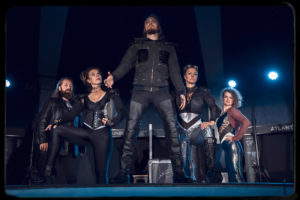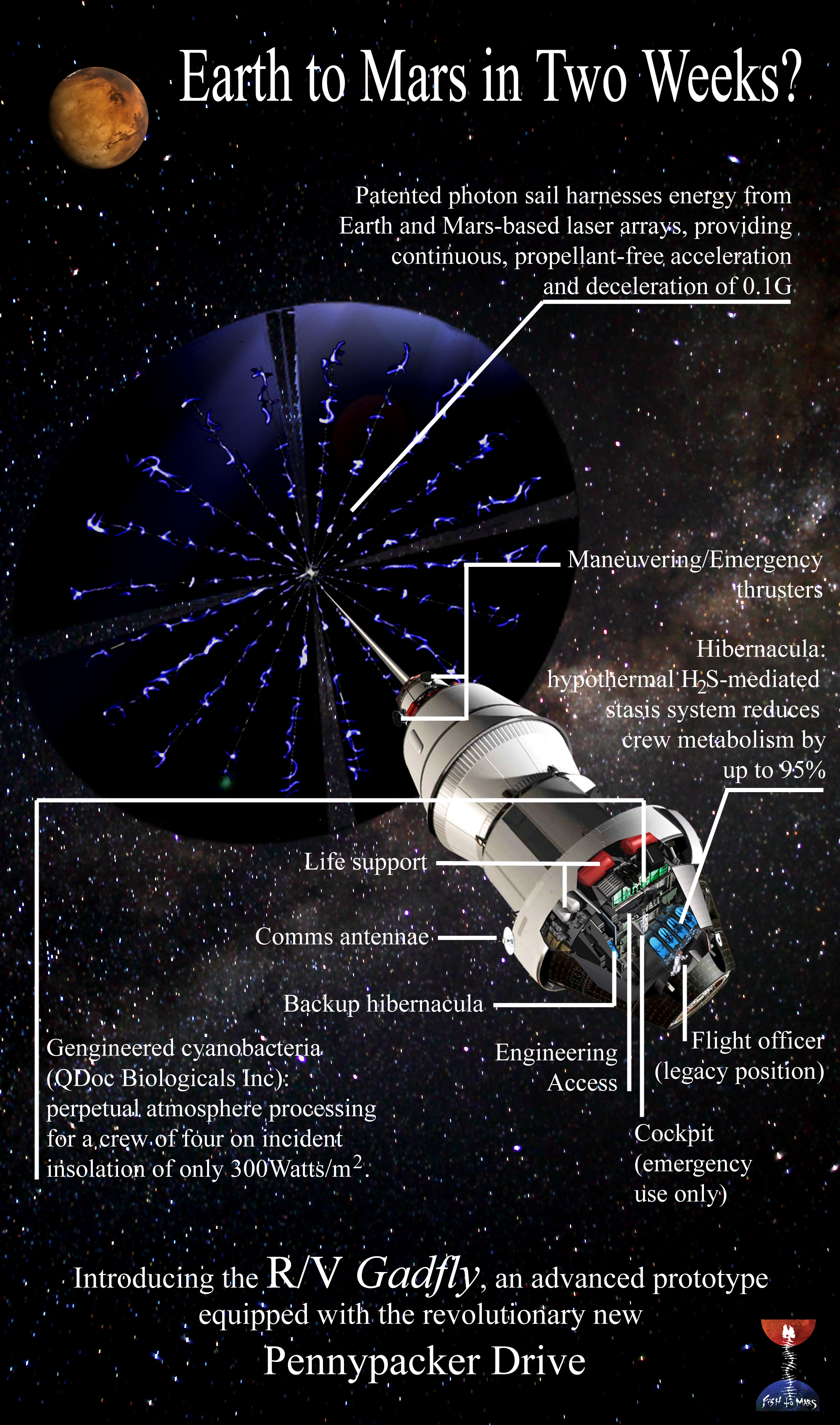Fish To Mars: a metal science opera
Among Bergen’s specialties are metal music and marine science. Any attempt to combine these two may sound like a weird challenge. However, NFR-funded project iSCOPE (integrating Science of Oceans, Physics and Education), not only takes this challenge, but pushes it even further by making it an opera! And there it is: Fish To Mars: a Metal Science Opera.

R/V Gadfly en route to Mars (illustration by Kim Holm)
Fish to Mars uses an original commissioned story from Dr. Peter Watts (marine biologist and prize-winning sci-fi writer who keeps the science correct, www.rifters.com), an original score by Arild Brakstad (composer of Svartediket), scenography by Kim Holm and Janne Robberstad (stipendiat HVL) and the librettist talents of Prof. Karin Pittman as well as extremely talented singers to convey through an engaging space opera some grand themes about life, evolution and our place in the universe.
Fish To Mars took place this year at the Bergen Aquarium in cooperation with the Institute of Marine Research, the University Museum Bergen, Western Norway University of Applied Sciences, Norwegian Teacher Academy, UiB and bioCEED, UiB Faculty of Art Music and Design and UCBerkeley and CSLP Concordia as well as several independent artists and schools.

The ship’s crew (photo:Jarle H. Moe)
Starring Odette Tetlie, Kristin Lytskjold Raknes, James Richard Myhre Gåssand, Kristine Klubben and Chris Møller, the story takes us on board the R/V Gadfly, an inner-system light transport en route to Mars. Its precise destination: the Martian colony of Bowieville. Its cargo: a load of… lungfish. Its crew of five is suddenly awakened from dreamless hibernation to realize that a micrometeorite has damaged the ship badly. The good news: nobody is going to die of suffocation as the autorepair mechanisms have sealed the hull breach. The bad news: R/V Gadfly is still three weeks away from landing on Mars, its propulsion is damaged, and there isn’t enough food for the crew to survive until landing. Logically, the way to go is to eat the fish that is stored on board (and which is probably the sole purpose for this flight to Mars, but why?), or to reduce the size of the crew… Call that a choice?
As the story elaborates, the audience is presented with technological facts (technology behind the space trip and colonization of Mars), as well as geological and biological facts on which the opera is built. Among these facts are the occurrence of organic molecules and life in the vicinity of deepsea hydrothermal vents, DNA editing and thus data storage in the genome of selected species, species-selective survival to climate change, etc. The way the audience receives and perceives these facts will be further studied by iSCOPE.
For now, you may have a look at the website fish2mars.w.uib.no where you will find the 2017 trailer, the story, the artwork, the characters and much more. Pictures from this year’s show have been released by photographer Jarle H. Moe and may be seen at www.jarlehm.com/Mars.
By the way, the combination “Metal – Science – Opera” has certainly surprised a whole community, as documented below.
Metal science opera? Those are three words I didn’t expect to see together
— Joseph Chipperfield (@joechip90) 20 mai 2018




